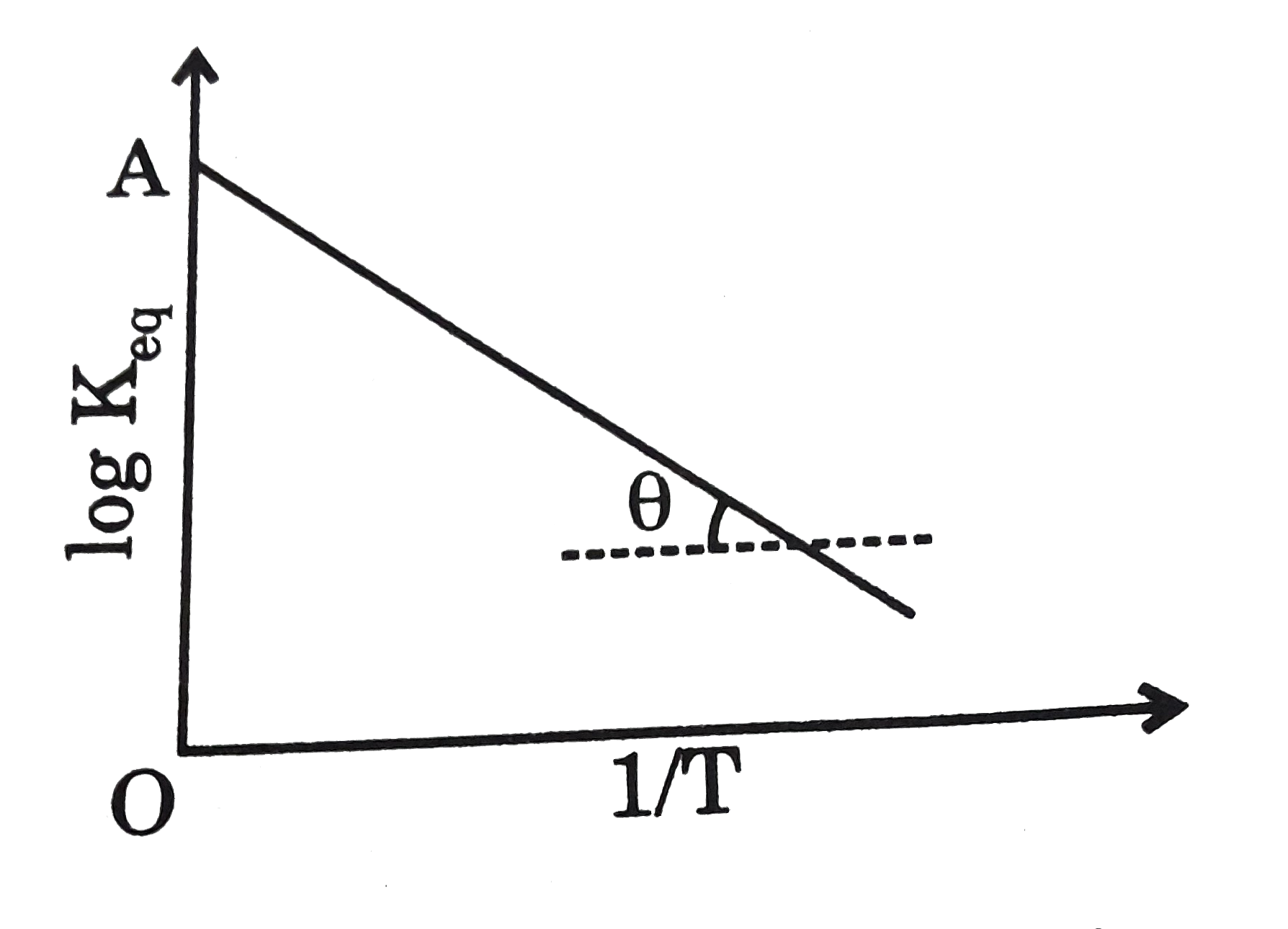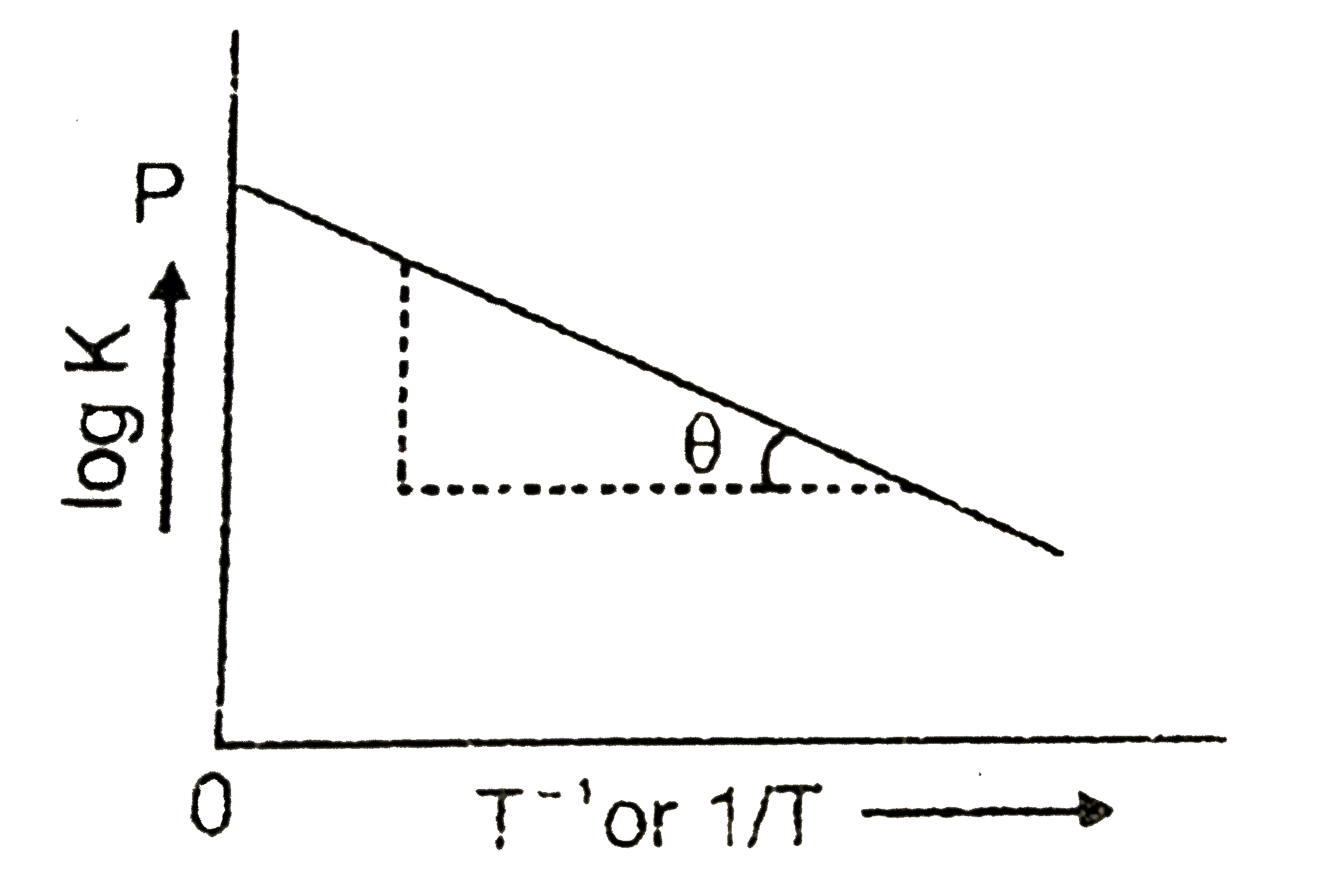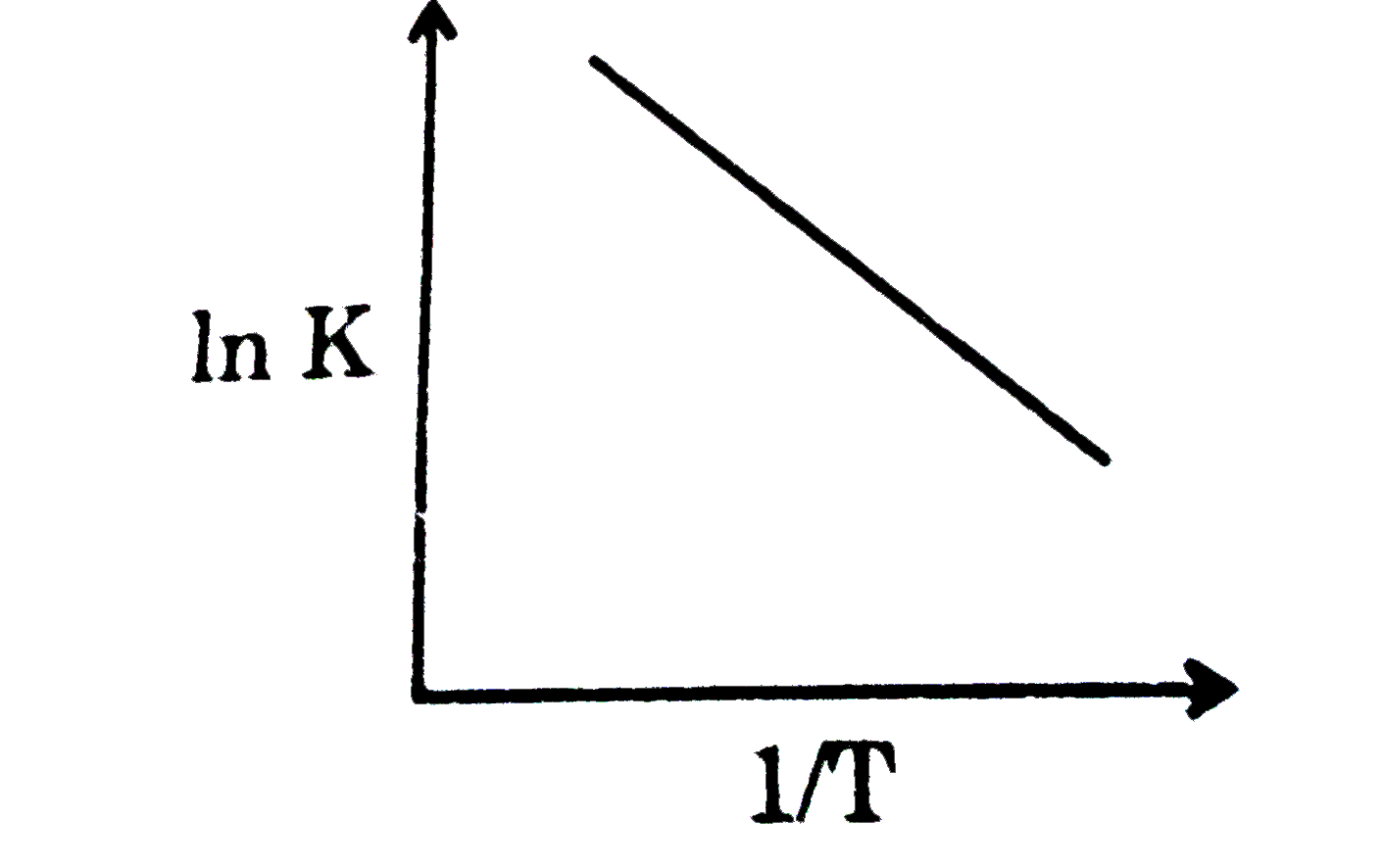For a hypothetical reaction: A(g)+B(g)⇔C(g)+D(g) a graph between log Keq and T− is striaght line as follows, where θ=tan−10.5 and OA=1.0 (S.I. units) Assuming ΔH∘ is independent of temperature, the equilibrium constant at 298 K will be:

10.002×109
3.79×108
7.96×109
9.96×109
The correct Answer is:D
Step by step video, text & image solution for For a hypothetical reaction: A(g) +B(g) hArr C(g) +D(g) a graph between log K_(eq) and T^(-) is striaght line as follows, where theta = tan^(-1) 0.5 and OA = 1.0 (S.I. units) Assuming DeltaH^(@) is independent of temperature, the equilibrium constant at 298 K will be: by Chemistry experts to help you in doubts & scoring excellent marks in Class 12 exams.
Updated on:21/07/2023Topper's Solved these Questions
- GRAPHICAL INTERPRETATIONBook:GRB PUBLICATIONChapter:GRAPHICAL INTERPRETATIONExercise:H. Chemical Kinetics
Explore 1 Video
- GRAPHICAL INTERPRETATIONBook:GRB PUBLICATIONChapter:GRAPHICAL INTERPRETATIONExercise:Chemical Kinetics
Explore 80 Videos
- GRAPHICAL INTERPRETATIONBook:GRB PUBLICATIONChapter:GRAPHICAL INTERPRETATIONExercise:G. Chemical Equilibrium
Explore 1 Video
- F-BLOCK ELEMENTSBook:GRB PUBLICATIONChapter:F-BLOCK ELEMENTSExercise:Subjective type
Explore 7 Videos
- HYDROCARBON (ALIPHATIC)Book:GRB PUBLICATIONChapter:HYDROCARBON (ALIPHATIC)Exercise:Previous years jee questions
Explore 28 Videos
Similar Questions
For a hypothetical reactionP(g) + Q(g) hArr R(g) + S(g) , " a graph between log K and " T^(-1) " is a straight line as hsown in the fig. in which " theta = tan^(-1) 0*5 and OA = 10. " Assuming "Delta H^(@) " is independent of temperature , calculate the equilibrium constant of the reaction at 298 K and 798 K respectively.
View SolutionFor the reaction A(g)+B(s)⇔C(g)+D(g),Kc=49moldm−3 at 127∘C. Calculate Kp.
View Solution
Knowledge Check
For the hypothetical reaction, 2A(s)+B(g)⇔3C(g)
What is the equilibrium expression ?AK=[C]3[A]2[B]BK=3[C]2[A][B]CK=[C]3[A]2+[B]DK=[C]3[B]The Kc for given reaction will be A2(g)+2B(g)⇔C(g)+2D(s)
AK=[C][D]2[A2][B]2BK=[C][A2][B]2CK=[A2][B]2[C][D]2DK=[A2][B]2[C]For the reaction H2(g)+I2(g)⇔2HI(g), the equilibrium constant Kp Changes with
Atotal pressureBcatalystCthe amount of H2andI2 presentDtemperature
Variation of equiibrium constant K with temperature T is given by van 't Holf equation,
logK=logA−ΔH∘2.303RT
A graph between log K and T−1 was a straight line as shown in the figure and having θ=tan−1(0.5)andOP=10. Calculate:
(a) ΔH∘ (standard heat of reaction)when T=300K,
(b) A (pre-exponetial factor),
(c) Equilibrium constant K at 300K,
(d) Kat900KifΔH∘ is independent of temperature.

View SolutionFor the reaction at 298K
A(g)+B(g)⇔C(g)+D(g)
If ΔH∘=−29.8 Kcal and ΔS∘KcalK−1 then calculate reaction constant (k)
View SolutionFor the reaction
H2(g)+I2(g)⇔2HI(g)
The equilibrium constant Kp changes with
View SolutionConsider the following reaction :
2A(s)+3B(g)⇔2C(g)+2D(g)
For given reaction, graph which is followed between ln k and 1/T is:

Which of the following statement(s) is/are incorrect ?
View SolutionAt 1000 K, the value of Kp for the reaction: A(g)+2B(g)⇔3C(g)+D(g) is 0.05 atmosphere. The value of Kc in terms of R would be:
View Solution

